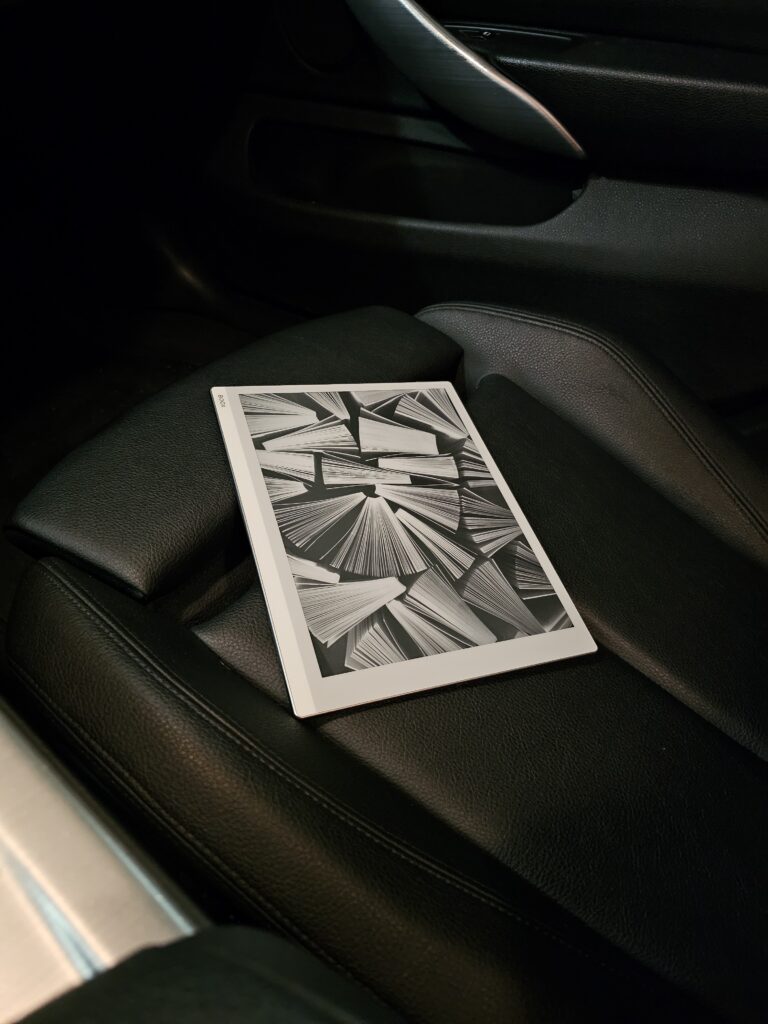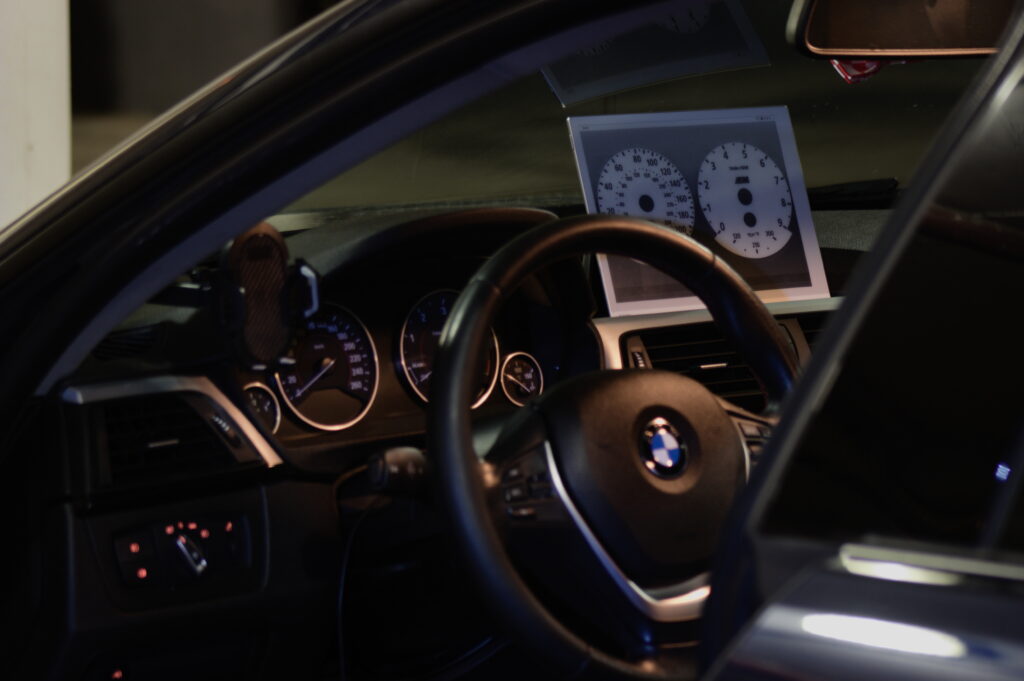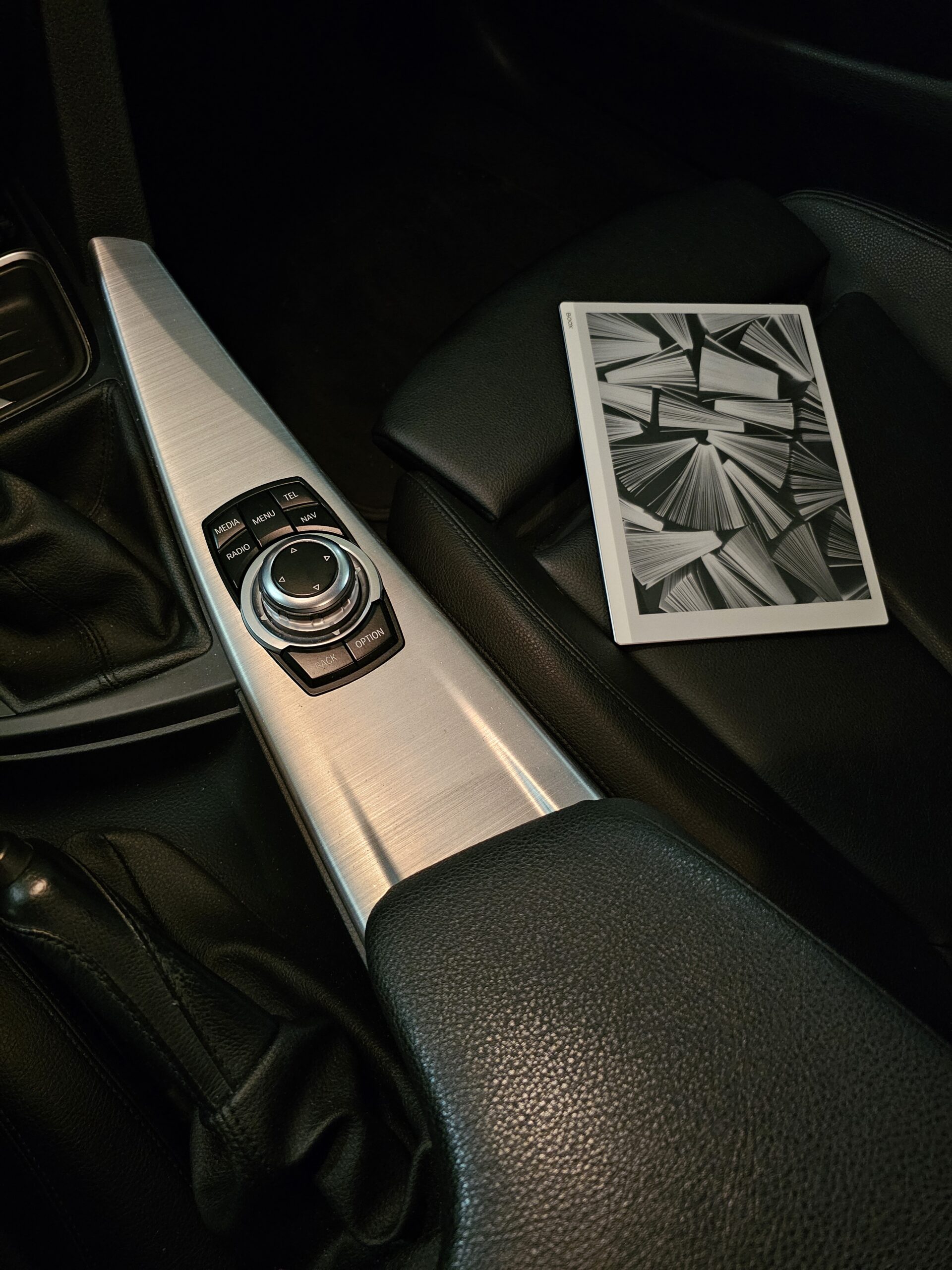E-Ink Technology in Automobiles: Where It Makes Sense and Where It Doesn’t
If you’re unfamiliar with how E-Ink displays work or their underlying technology, check out our previous post:
👉 What is E-Ink Technology and How Does It Work?
In this article, we’ll explore how E-Ink can be integrated into automotive systems, where its advantages shine, where it falls short, and how it can complement existing LED/LCD displays. While E-Ink is known for e-readers and low-power devices, its use in the automotive world is expanding – with some surprising opportunities.
1. Why Consider E-Ink for Cars?
E-Ink displays are known for:
- Ultra-low power consumption
- Visibility in direct sunlight
- Bi-stable nature (holding an image without power)
- Minimal eye strain due to reflective rather than emissive display
These characteristics open the door for intelligent applications in cars – especially electric vehicles, where energy conservation is critical, and user interfaces are becoming increasingly digitized.
2. Advantages of E-Ink Displays in Automotive Design
🔋 Energy Efficiency
E-Ink consumes power only during content changes, not while holding an image. In automotive applications, this means:
- No power draw when showing constant values like temperature, fuel level, or range
- Ideal for electric vehicles where reducing power consumption improves driving range
- Viable for displays that stay on even when the car is off (e.g. digital license plates, battery indicators)
☀️ Sunlight Readability
Conventional LCDs struggle in high-brightness environments without additional backlighting. E-Ink, however:
- Is perfectly legible under direct sunlight
- Requires no backlight, reducing glare and energy needs
- Can be embedded into rooftop displays, mirrors, or window panels for always-visible status

Source: Blog author
🧠 Passive, Glanceable Interfaces
E-Ink works best for data that doesn’t change rapidly, making it ideal for:
- Speed limit signs
- Gear indicators
- Climate status (fan speed, temperature setting)
- Door open indicators
- Range or battery state
This supports a design philosophy of minimal distraction, encouraging users to get essential info at a glance – no animation, no light pollution, no clutter.
🧩 Flexible Form Factors
Modern E-Ink technology offers:
- Curved and flexible screens
- Transparent overlays
- Ultra-thin sheets
In automotive interiors, this allows for integration into:
- Dashboard inlays
- Center console trims
- Seat backs
- Side panel displays
BMW’s i Vision Dee concept even demonstrated E-Ink on exterior panels, proving it’s both functional and expressive.
3. Where E-Ink Fails: Limitations in Dynamic Use Cases
Despite its strengths, E-Ink has several downsides that limit its usability in dynamic automotive applications.
❌ Slow Refresh Rates
Even the fastest E-Ink displays update at ~250-500 ms. This is:
- Far too slow for reversing cameras
- Inadequate for live navigation
- Poor for animated transitions or touch responsiveness
Anything that requires video-like refresh is better suited to LCD or OLED.
🎨 Limited Color Capabilities
Color E-Ink exists (e.g., Kaleido 3, Gallery 3), but:
- It has a narrow color gamut
- Colors are muted and desaturated
- Refresh speeds are even slower than monochrome
- Higher cost and less availability
Therefore, color E-Ink is not suitable for infotainment systems or rich user interfaces.
🌡️ Temperature Sensitivity
Most E-Ink panels operate best between 0°C and 50°C. In extreme cold or heat:
- Refresh times increase
- Visual contrast may degrade
- Screens may fail altogether
This makes E-Ink a poor choice for exposed outdoor use in harsh climates unless properly insulated and regulated.
💲 Higher Cost for Non-Standard Formats
Large, flexible, or transparent E-Ink displays are:
- More expensive to manufacture
- Difficult to replace if damaged
- Often require custom controller hardware
This limits feasibility in mass-market vehicles or budget models.
4. Hybrid Interface Design: E-Ink + LCD
Rather than fully replacing traditional displays, E-Ink can complement them. Here’s how:
| Display Type | Ideal Use |
|---|---|
| E-Ink | Static info: climate settings, range, battery, gear, indicators, rear seat displays |
| LCD/OLED | Dynamic content: navigation, video, infotainment, live vehicle feedback |
💡 Concept: Dual-Mode Center Console
- Outer ring made of E-Ink showing temperature, fan speed, drive mode
- Inner screen made of LCD showing media, maps, controls
- E-Ink remains visible when car is off, without draining battery
💡 Concept: Power-Efficient Rear Passenger Displays
- E-Ink displays embedded into seat backs
- Provide trip progress, time remaining, simple entertainment
- Easily visible in all lighting and consume no power when idle
💡 Concept: Ambient Personalization Panels
- E-Ink displays on door trims or dashboards
- Show user greetings, soft animations, or design themes
- Change color schemes without LEDs or extra hardware

Source: Blog author
5. Applications of E-Ink in Current or Concept Vehicles
🚘 BMW i Vision Dee
- Exterior panels feature E-Ink film that can switch between 32 colors
- Offers personalization, dynamic communication (e.g., turn signals, warnings)
🚗 Digital License Plates
- E-Ink used to display registration, status messages (e.g., “Stolen”, “Expired”)
- Already in use in some US states (e.g., California, Arizona)
🚐 Last-Mile Delivery Vehicles
- E-Ink displays show dynamic info: route changes, package status
- Passive signage without need for power connection
6. E-Ink Use Cases by Vehicle Type
🛻 Pickup Trucks / Off-Road Vehicles
- Rugged outdoor panels using E-Ink for tire pressure, terrain info, compass
- Glove-friendly controls with static info (no touch needed)
🚙 Family EVs
- Battery range display always visible on dashboard via E-Ink
- Rear climate control with passive E-Ink tiles
- Child-lock indicators or alerts on doors
🚘 Luxury Cars
- Dashboard personalization via embedded E-Ink panels
- Subtle design shifts without energy usage
- Passenger-specific E-Ink control zones

Source: AI generated
7. Implementation Considerations
⚙️ CAN Bus Integration
Most E-Ink modules can communicate via serial interfaces (UART, SPI), which are compatible with CAN Bus gateways. This allows:
- Dynamic updates based on ECU data
- Real-time sync with battery state, climate info, etc.
🔧 Firmware Complexity
Designing UI for E-Ink requires a different philosophy:
- Prioritize static or rarely-changing data
- Avoid animations and transitions
- Use large, high-contrast fonts and icons
🧪 Durability Testing
To pass automotive standards, E-Ink modules must be tested for:
- Heat cycling
- Vibration
- Humidity
- Glare resistance (despite their advantage, surface protection is needed)

8. Final Thoughts: When and Where to Use E-Ink in a Car
E-Ink isn’t here to take over your infotainment screen – but it offers a unique and powerful supplement to traditional displays in places where low energy consumption, high visibility, and elegance are required.
✅ Best Use Cases:
- Climate control panels
- Dashboard range indicators
- Digital license plates
- Door or mirror status panels
- Passive interior personalization
❌ Not Ideal For:
- Live camera feeds
- Maps/navigation
- Video/entertainment
- Touchscreen interactions
As vehicles move toward smarter interiors and sustainable design, we’re likely to see E-Ink used more and more creatively – especially in electric vehicles and mobility services.
Designers and engineers, take note: E-Ink may not be flashy, but it’s quietly revolutionary.

